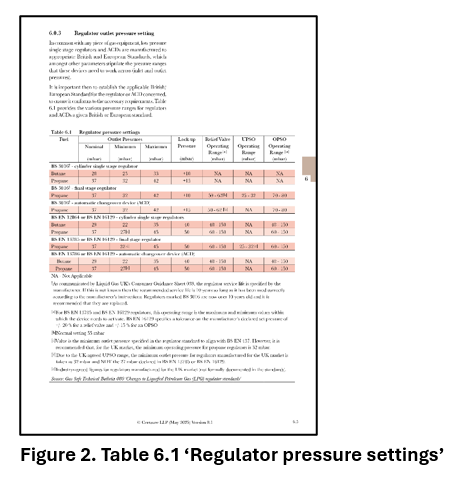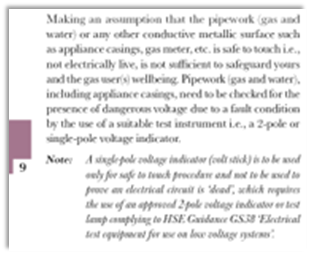Learn more about the LPG On-Site Guide update and what has changed.
Version 8 of NICEIC Certification’s Liquefied Petroleum Gas Safety On-Site Guide (LPG OSG), printed in September 2024 (ISBN: 978-1-83863-59-1), has been reviewed following feedback from an NICEIC Certification Approved Centre, Sterling Assessment Services Ltd, which highlighted two specific areas that were causing confusion for their candidates.
It was agreed that these two areas of confusion, although not significant problems, should be addressed at the earliest opportunity; NICEIC Certification committed to update the guide when it next needed to be reprinted.
The updates are not sufficient to warrant a new Version of the LPG OSG, but they do merit an amendment. As such, the LPG OSG becomes Version 8.1 (ISBN: 978-1-83863-79-9; eBook ISBN: 978-1-83863-080-5).
.png)
Figure 1. Deleted Figs 6.5 and 6.6
These two figures have been deleted (and the figures that follow renumbered) and replaced with a table (Figure 2) that provides the information in a more concise format as per the Gas Safe Register’s Technical Bulletin 080.

The second amendment is in Chapter 9, entitled Installation of Pipework and Fittings, specifically section 9.4, Safety Precautions, with regards to single-pole voltage indicators.
Additional text has been inserted at the end of the left-hand column of the second paragraph, and as a note on page 9.18 (Figure 3) that draws attention to the fact that single-pole voltage indicators (volt sticks) have a specific and limited role when checking conductive elements (metallic pipes, meters, appliance cases, etc.) for dangerous voltages.

Figure 3. Page 9.18 of Chapter 9
Note: This is an outstanding change identified for the Domestic Gas Safety On-Site Guide, which will be undertaken at a later date when that publication is reviewed.
NICEIC Certification would like to publicly thank Sterling4Gas for highlighting these concerns in a constructive and cooperative manner, and to encourage all NICEIC Certification Centres to actively engage with us as and when there are areas of concern, or where they believe improvements can be made.
The expected release date of the new guide will be in July/August 2025.
It was agreed that these two areas of confusion, although not significant problems, should be addressed at the earliest opportunity; NICEIC Certification committed to update the guide when it next needed to be reprinted.
The updates are not sufficient to warrant a new Version of the LPG OSG, but they do merit an amendment. As such, the LPG OSG becomes Version 8.1 (ISBN: 978-1-83863-79-9; eBook ISBN: 978-1-83863-080-5).
What has changed?
Chapter 6, entitled LPG Supply Pressures, contained two figures (Figures 6.5 and 6.6) that presented pressure ranges for various regulators in a pictorial form (Figure 1), which were proving awkward for some candidates to navigate..png)
Figure 1. Deleted Figs 6.5 and 6.6
These two figures have been deleted (and the figures that follow renumbered) and replaced with a table (Figure 2) that provides the information in a more concise format as per the Gas Safe Register’s Technical Bulletin 080.

The second amendment is in Chapter 9, entitled Installation of Pipework and Fittings, specifically section 9.4, Safety Precautions, with regards to single-pole voltage indicators.
Additional text has been inserted at the end of the left-hand column of the second paragraph, and as a note on page 9.18 (Figure 3) that draws attention to the fact that single-pole voltage indicators (volt sticks) have a specific and limited role when checking conductive elements (metallic pipes, meters, appliance cases, etc.) for dangerous voltages.

Figure 3. Page 9.18 of Chapter 9
Note: This is an outstanding change identified for the Domestic Gas Safety On-Site Guide, which will be undertaken at a later date when that publication is reviewed.
NICEIC Certification would like to publicly thank Sterling4Gas for highlighting these concerns in a constructive and cooperative manner, and to encourage all NICEIC Certification Centres to actively engage with us as and when there are areas of concern, or where they believe improvements can be made.
The expected release date of the new guide will be in July/August 2025.



